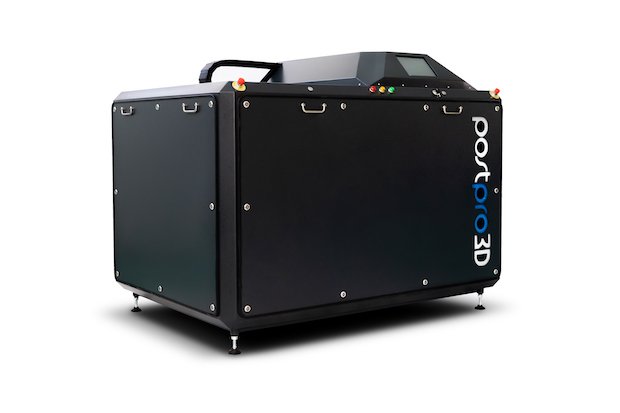UK-based post-processing specialist Additive Manufacturing Technologies (AMT) is promoting safety and sustainability in 3D printing through four pillars; no waste, better chemistries, less energy, less labor, and consumables.
According to Joseph Crabtree, CEO of AMT, “It is important when looking at the use of AM as a production technology to analyze all steps involved from product design to final end-use product or component.”
“It is also vital when looking to promote environmental sustainable industrial systems to take this holistic view as well, and here at AMT, we have an obvious and distinct focus on the post-processing stage for AM.”

Four pillars of sustainability
Founded in 2015, AMT has developed the patent-pending PostPro3D technology for industrial 3D printed objects created from Multi Jet Fusion (MJF), Laser Sintered (LS), High Speed Sintering (HSS) and FFF/FDM. It uses de-powdering and smoothing processes, that are otherwise labor-intensive and expensive for manufacturers, to finish components.
The company’s systems are built on the four pillars of no waste, better chemistries, less energy, and less labor and consumables. Firstly, no waste water effluent refers to chemicals handled in a closed-loop zero-waste system that eliminates any excess stream for operators to dispose of.
The second, better chemistries, addresses the avoidance of carcinogenic, mutagenic, reprotoxic (CMR) materials as well as flammable or explosive chemicals. All chemicals used by AMT are made from a propriety mix of organic solvents and are regulated by the EU’s REACH agency (Registration, Evaluation, Authorisation, and Restriction of Chemicals).
Less energy is affirmed through the PostPro3D system’s shutdown functionalities which minimizes power output. Finally, Return On Investment (ROI) is reportedly achieved after 2 months of purchasing a PostPro3D system which addresses the less labor and consumables pillar of sustainability.

AMT post-processing systems
Earlier this year, industrial 3D printing solutions company Farsoon Technologies entered into a collaboration with AMT to develop effective post-processing solutions for Farsoon’s existing 3D printers and forthcoming Continuous Additive Manufacturing Solution (CAMS) systems.
Following this, the company introduced the PostPro3DColor, and the PostPro3DMini. The first system offers the same functions of the PostPro3D whilst adding color to the 3D printed parts in a single step without the use of water while the latter provides the advantages of the PostPro3D machine in a smaller unit.

For more additive manufacturing news subscribe to the 3D Printing Industry Newsletter, follow us on Facebook and like us on Twitter.
Seeking 3D Printing Jobs? Join and advertise on our dedicated site now to reach professionals in this industry.
Featured image shows 3D printed parts post-processed with AMT’s PostPro3D. Image via AMT.


